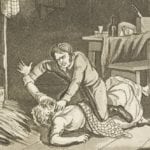 Mysteries
Mysteries  Mysteries
Mysteries  Weird Stuff
Weird Stuff 10 Celebrities Who Have Admitted to Alien Encounters
 Our World
Our World 10 Surprising Secrets of Notre Dame Cathedral
 Miscellaneous
Miscellaneous 10 Intriguing Origins of Popular Carnival Rides
 Weird Stuff
Weird Stuff Ten Unexpected Discoveries Involving Vomit
 Movies and TV
Movies and TV 10 Actors Who Almost Didn’t Take Career-Defining Roles
 Technology
Technology 10 Little-Known Shifts in Computer Science
 Religion
Religion 10 Catholic Histories That Reveal Acceptance of Abortion and Contraception
 Politics
Politics 10 Lesser-Known “First and Only” Facts about U.S. Presidents
 Miscellaneous
Miscellaneous 10 Things You May Not Know about the Fourth of July
 Mysteries
Mysteries 10 Scientific Mysteries We Don’t Fully Understand
 Weird Stuff
Weird Stuff 10 Celebrities Who Have Admitted to Alien Encounters
 Our World
Our World 10 Surprising Secrets of Notre Dame Cathedral
Who's Behind Listverse?

Jamie Frater
Head Editor
Jamie founded Listverse due to an insatiable desire to share fascinating, obscure, and bizarre facts. He has been a guest speaker on numerous national radio and television stations and is a five time published author.
More About Us Miscellaneous
Miscellaneous 10 Intriguing Origins of Popular Carnival Rides
 Weird Stuff
Weird Stuff Ten Unexpected Discoveries Involving Vomit
 Movies and TV
Movies and TV 10 Actors Who Almost Didn’t Take Career-Defining Roles
 Technology
Technology 10 Little-Known Shifts in Computer Science
 Religion
Religion 10 Catholic Histories That Reveal Acceptance of Abortion and Contraception
 Politics
Politics 10 Lesser-Known “First and Only” Facts about U.S. Presidents
 Miscellaneous
Miscellaneous 10 Things You May Not Know about the Fourth of July
10 Truly Monstrous Serial Killers From Around The World
Ted Bundy once said, “Sometimes I feel like a vampire.” He looked like a human, he talked like a human, but under that skin was a monster. Serial killers lack whatever it is that make the rest of us human, and the 10 real-life horror villains on this list are no exception.
10The Suicide Website Murderer

While the internet provides us with easy access to information and many hours of cat videos, it definitely has a dark side. For example, depressed Japanese citizens afraid to die alone use the web to form suicide pacts. After finding partners online, they meet up and kill themselves. It’s a disturbing trend, and these troubled people are perfect targets for monsters like Hiroshi Maeue.
Maeue suffered from paraphillic psychosexual disorder, meaning he could only get off by hurting people. This pervert’s preferred method of sexual gratification was asphyxiating others. Between 1988 and 2005, Maeue tried to strangle five people, but only received light sentences for two of the attacks. Those first few attempts were only practice though. When the internet suicide pacts grew in popularity, Maeue started hunting online.
His first victim was 25-year-old Michiko Nagamoto. Maeue sent her multiple emails encouraging her to commit suicide with him. He even suggested they sit in his car and breathe in fumes from burning charcoal. The young woman agreed, but when she met Maeue, he tied her up and held her mouth and nose shut until she died. When asked later why he did it, Maeue responded, “I wanted to watch a face in agony.”
Next, Maeue went after a 14-year-old boy and a college student. Each time, he promised his victim they’d die peacefully together. When they showed up, they were bound and murdered. Afterwards, Maeue hid the bodies in the mountains or near a dam, before returning home to watch recordings of the killings. Fortunately, Maeue was stopped before he could claim more victims, and was executed by hanging in 2009. Strangely, Maeue never appealed his sentence. Perhaps, like his victims, he was ready to end it all.
Ever wondered what goes on inside the head of a serial killer? Take a closer look with Serial Killers: The Method and Madness of Monsters at Amazon.com!
9The Sunday Morning Slasher
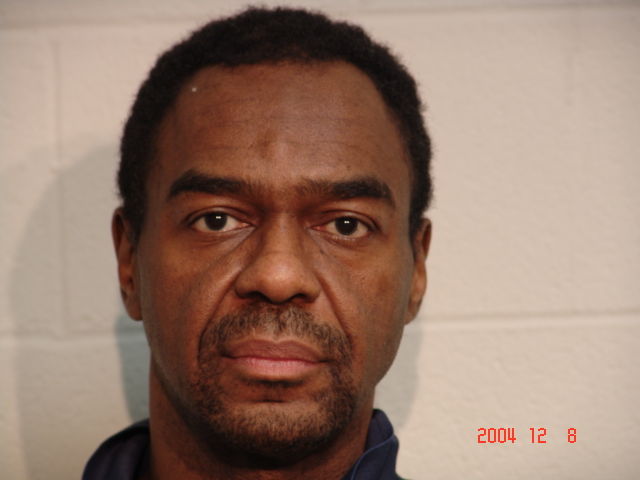
Houston, Texas was a bad place to be in 1981. The Lone Star State’s biggest city had the dubious distinction of leading the nation in homicides—over 700 of them. When Carl Eugene Watts moved into town, things got a lot worse.
Before he started his Houston spree, Watts had been busy in Michigan. He was the prime suspect in the 1980 murders of three Ann Arbor women, but authorities didn’t have enough evidence to convict the “Sunday Morning Slasher.” When Watts moved to Houston, they could only warn police that trouble was heading their way.
When Watts hit Texas, he moved at an amazing speed, his methods changing from killing to killing. Some women were stabbed, some strangled, and one was even hanged, all because they had “evil in their eyes.” Convinced they were wicked, Watts often stole trophies from his victims and burned them to banish their spirits. He took 12 lives before May 23, 1982, when he tried to drown Melinda Aguilar and her roommate in their bathtub. Aguilar escaped from the apartment and called for help. Watts was captured as he tried to flee.
Despite his crimes, the Houston D.A. made a deal with Watts. The Slasher confessed to 12 more murders in exchange for a 60-year sentence. Then, thanks to a technicality, he was given time off for good behavior. Three days were struck off his sentence for every day he spent behind bars—which meant he’d be free in 24 years. Determined to keep this madman locked up, Michigan stepped in to save the day. In November 2004, they found a witness linking Watts to the murder of Helen Dutcher. The Sunday Morning Slasher was sentenced to life in a Michigan prison and died of prostate cancer in 2007.
8The Murderous Reporter

Crime reporters like Paul Avery and Dominick Dunne have nothing on Vlado Taneski. The Macedonian writer took investigative journalism to a whole new level when he covered a serial killer’s exploits in the town of Kicevo. In the mid-2000s, Taneski wrote about three women who’d been violently raped and murdered. The women, ranging in age from 56 to 65, were all cleaners who resembled each other. Each one had been strangled with a telephone cord, stuffed into plastic bags and tossed outside town. Despite Taneski’s quiet manner and meek personality, his columns kept readers enthralled with his incredible attention to all the grisly details.
In fact, his articles were so detailed they raised a few eyebrows among the local police force. Detectives wondered how Taneski knew things that had never been released to the public, like how the killer used the phone cord to tie up the corpses. Taneski even knew what kind of phone cord the killer was using. Investigators decided to get a sample of Taneski’s DNA—and found it matched the murderer’s semen. Taneski was arrested on suspicion of murder and all the pieces started falling into place. This respected journalist had a horrible relationship with his mom—who just so happened to be a cleaner and looked like all three victims. But before Taneski could go to trial, he committed suicide in his cell, drowning himself in a bucket of water. Talk about an admission of guilt.
7Whips And Chains

Want to hear a disturbing statistic? In 2012, the FBI claimed there were at least 300 “highway serial killers” cruising America’s interstates. Of course, 300 in a nation of over 300 million is a pretty small number. Chances are good most hitchhikers won’t end up on dead along the side of the road. Of course, all of Robert Ben Rhoades’s victims probably thought the same thing.
Rhoades was a long haul trucker whose CB handle was “Whips and Chains” and it probably won’t shock you to learn he was big in the BDSM scene. When he wasn’t clubbing, “Whips and Chains” was picking up young female hitchhikers at truck stops and winning their trust with his cool, confident demeanor. Then he’d chain them up inside his rig, cut their hair, shave their bodies and pull out his rape kit, a briefcase full of alligator clips, needles, whips, and dildos. After he had his fun, Rhoades murdered his victims, sometimes using a piece of wire.
The torture truck toured America until April 1, 1990, when an Arizona cop noticed Rhoades had his hazard lights on. When the officer investigated, he found a naked woman shackled in the cab. Rhoades was arrested, and investigators started digging into his background. They searched his truck and apartment and found bloody towels, a damning journal, and photos of a terrified girl. A year later, they identified her as Regina Kay Walters, a 14-year-old whose body was found in Illinois. Faced with the death penalty, Rhoades plea bargained and was sentenced to life. But the horror story kept unfolding. A few years ago, Rhoades was given two additional life sentences for the murder of two traveling missionaries. You have to wonder how many other drifters hitched a ride in Rhoades’s rolling dungeon.
6The Railroad Killer

The angel in Revelation 18 is no Raphaelite cherub. It’s apocalyptically powerful, preaches fire and brimstone…and is symbolic of a Mexican immigrant with a penchant for violence. Well, that’s what Angel Maturino Resendiz believed anyway. The migrant worker claimed to be half-man, half-angel. He was impossible to kill, thought Timothy McVeigh was a “holy brother,” and declared it was his divine duty to punish the wicked.
Resendiz traveled across America, jumping from boxcar to boxcar. Whenever he felt the presence of evil, he’d hop off the train and hunt down evildoers. Or so he claimed. FBI profilers said Resendiz’s motive was much simpler and far less righteous—he killed for sexual gratification. Between 1989 and 1999, the Railroad Killer left a trail of bodies across the US: eight in Texas, two in both Florida and Illinois, and one each in Georgia, Kentucky, and California.
At first, Resendiz hunted near the train tracks, shooting his victims or beating them with railcar couplings, often sodomizing female corpses afterwards. Eventually, he developed into a “Blitzkrieg killer,” leaving the rail yards to break into homes. He butchered his victims and then searched for something to justify what he’d done. He often claimed his victims deserved to die because they were pro-choice, homosexuals, or witchcraft practitioners.
His choice in weapons was also constantly changing. He beat a pastor and his wife to death with a sledgehammer. He killed two people in one night with a pickax. He even used an antique statue to club a physician to death. By the time he was caught, Resendiz had murdered at least 14 people. The Railroad Killer was executed in Texas on June 27, 2006. So much for being an angel who couldn’t die.
5The Cannibal Of Muensterberg
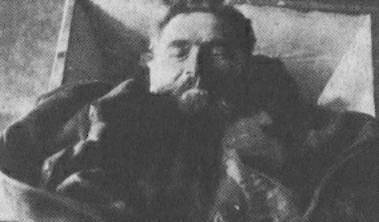
Thanks to Hannibal Lecter, cannibal killers aren’t all that shocking. In fact, we almost expect it from our psychopathic murderers. However, Karl Denke took things to the next level. He was Lecter meets Mrs. Lovett.
Denke lived in what was then the town of Muensterberg in Germany (today it’s Ziebice, Poland), and he was a beloved figure around town. Everybody called him “Papa Denke,” he was active in church, and was always willing to give a handout to those less fortunate. He even let poor travelers and homeless vagabonds spend the night in his home. When he wasn’t doing good deeds, he was selling suspenders, belts, and scrumptious jars of pickled pork. He was so popular that nobody cared if he regularly dumped buckets of blood outside his home, or that his apartment smelled really weird.
Then on December 21, 1924, a coachman heard screaming coming from Denke’s house. He ran inside to find a young man covered in blood. Denke claimed the man was a thief who he’d fended off with an ax. Following protocol, the police took Denke to the station and locked him up. Later that evening, they found Papa Denke hanging in his cell, having committed suicide with his handkerchief. Suspicious, the police searched his home and found human skin (for those suspenders) and tubs of pickled flesh. They even found a journal full of names, dates, and…weights. In total, authorities suspected Denke of murdering 40 people over a span of four years. Even worse, everybody around Muensterberg had been eating them for dinner. Yum.
4The Godfather Of Matamoros
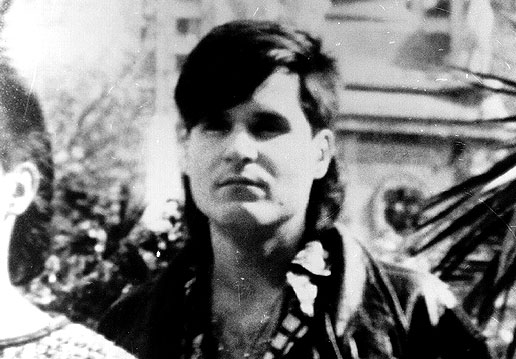
When Adolfo Constanzo was a baby, a priest gave him a bowlful of water…that had been used to boil human bones. It was the first step in a magical career that would end with dismembered corpses scattered across Mexico. His mom raised him as a follower of Palo Mayombe, an African-influenced religion that developed among slaves in the Spanish Caribbean. When he was older, Constanzo dedicated himself to Kadiempembe, his version of the devil. He worked as a fortune teller and magician—with a clientele of hardened criminals. The Florida native worked for Mexican gangsters, advising them with his psychic abilities and offering powers like invisibility and the strength to deflect bullets.
Constanzo’s charisma attracted devoted followers, including drug dealers who believed his religion was good for business. But to keep the gods happy, Constanzo demanded human sacrifice. On his ranch outside Matamoros, “El Padrino” (The Godfather) sacrificed enemy gangsters, farmers, and even kids. He slit throats, cut off genitals, chopped off heads, and ripped out hearts and lungs. Not always in that order. Afterwards, the body parts were boiled in cauldrons, and the gang members took turns drinking the bloody broth.
However, Constanzo made a mistake when he sacrificed an American student, 21-year-old Mark Kilroy, who his men had captured while he was partying in Matamoros. His abduction brought in the American government, and Kilroy’s family offered a reward for any information about their son. Under heavy pressure, the Mexican police began an intensive search for the missing student. Their big break came when one of Constanzo’s followers ran a police roadblock. Fleeing from the cops, the cultist led authorities straight to the ranch, where they discovered 15 bodies buried in the desert (and that’s not counting all the people Constanzo’s cult killed in Mexico City). A month later, Constanzo was found hiding in a follower’s apartment. After nearly 200 cops surrounded the building, Constanzo, fearing arrest, ordered his followers to shoot him and his lover. The bullets didn’t bounce off.
Discover more monstrous serial killers when you buy Serial Killers: The World’s Most Evil at Amazon.com!
3The Ukrainian Terminator
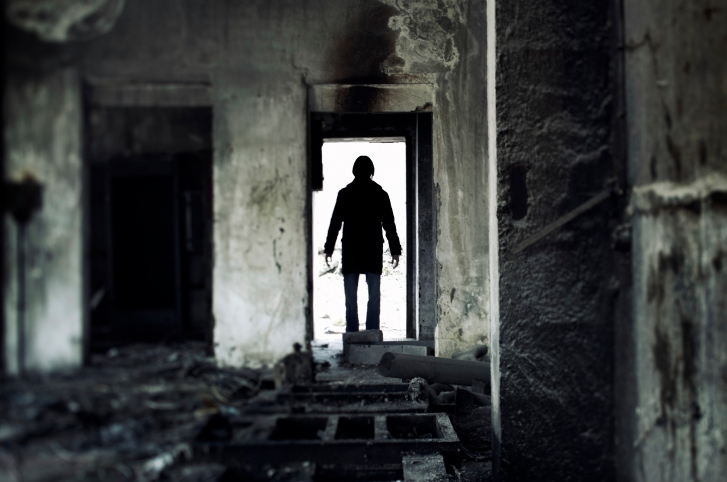
In “The Terminator,” the T-800 breaks into several homes and even a police station, murdering everyone in sight. In that respect, he’s not much different than his Ukrainian namesake, Anatoly Onoprienko.
In 1989, Onoprienko pulled up beside a car parked on the side of the road and shot everyone inside. He didn’t have a motive. He just felt the urge. For his next kill, the Terminator and a friend from his gym broke into a home, stole whatever they could find, and murdered everyone there. Not long after that, Onoprienko found another car by the side of the road, butchered the family inside, and torched the bodies.
In 1995 and 1996, the Terminator armed himself with a sawed-off 12-guage shotgun and broke into homes across the Ukraine, slaughtering entire families. Sometimes he shot the lock off the door, and sometimes he hurled a brick through the window, tricking the owner into stepping outside. The Terminator always blasted the men, but he was a bit more diverse when it came to the women and kids. Sometimes he used his shotgun, but sometimes he used knives, hammers, or axes. After the deed was done, he’d take a trophy and then set the house on fire. If anyone witnessed the crime, Onoprienko made sure they didn’t tell a soul. By the time he was arrested in 1996, he’d killed a total of 52 people.
During his trial, Onoprienko claimed he was possessed, that government agencies were spying on him, and that voices from outer spacee ordered him to kill. It was later revealed that Onoprienko’s lawyer told him to act insane, but the charade did little good. He was initially sentenced to death but Ukraine abolished the death penalty shortly after the trial. Instead, he was given life, and spent 17 years behind bars before dying of a heart attack in 2013. While some of his claims were pretty strange, he did make one that was probably true: “There is no better killer in the world than me.”
2The S-Bahn Murderer

From 1933 to 1945, Germany was full of psycho killers. While most wore Nazi uniforms, one terrorized the women of Berlin. The attacks began in 1939, when three women were stabbed and beaten. While they survived, Gerda Ditter wasn’t so lucky. In October 1940, her body was found covered in stab wounds, with strangulation marks around her neck. Corpses started appearing near the S-Bahn, a railway that ran through the city. They’d all been bashed in the head, before being thrown from a train.
While some newspapers tried to downplay the attacks, the public was terrified of the S-Bahn murderer. Many women working in munitions factories traveled home late at night, and were often on trains during the nightly blackouts. Intended to keep the city safe from bombers, the blackouts actually made things easier for the murderer. To keep citizens safe, some officers escorted women home, while others rode trains dressed in drag. When that didn’t trick the killer, female officers began riding the S-Bahn alone, armed only with protective headgear—but the murderer wasn’t fooled.
While Berlin’s serious crime unit, the Kriminalpolizei, was hampered by the blackouts and the high number of accidental deaths along the railway (who was a victim and who wasn’t?), their own prejudices often got in the way. Some suspected the killer was a Jew, a foreign laborer, or even a British spy. When they finally found their man, a misogynistic assistant signalman named Paul Ogorzow, they had trouble accepting the truth—Orgozow was a Nazi and a member of the SA. But the forensic evidence didn’t lie; Ogorzow was found guilty of eight counts of murder and executed via guillotine. The real irony here is at least one officer who brought Ogorzow down went on to lead an execution squad in Eastern Europe. In Nazi Germany, murder was the norm.
1The Serpent

Charles Sobhraj speaks several languages, studies psychology, and is an expert on gemology. He’s a big fan of Nietzsche, loves discussing “Beyond Good and Evil,” and between 1975 and 1976, this half-Vietnamese half-Indian “ubermensch” murdered over 20 people across India, Thailand, Nepal, Turkey, and Iran. And thanks to his genius, he almost got away.
Sobrhaj’s M.O. was to befriend western tourists hiking along the “Hippie Trail,” a path that wound its way through Asia. Then he used pills or powders to make his victims sick. When they were too weak to continue, he finished them off. Sometimes he strangled, sometimes he stabbed, and sometimes he burned them to death. Thinking of himself as a superman, Sobhraj saw his crimes not as murders but as cleanings.
Sobrhaj finally screwed up when he poisoned 60 French tourists staying at an Indian hotel. His attack backfired, only giving everyone violent diarrhea, and Sobhraj was caught and arrested. However, the Indian government only had enough evidence to convict him on minor charges. He was sentenced to 11 years, but the moment he stepped out of prison, the Thai government planned to extradite him to face the death penalty. However, a quirky Thai law stated that if a suspect wasn’t tried within 20 years of the crime, he couldn’t be prosecuted. If Sobhraj could stay in the Indian prison system just a little longer, he’d eventually be a free man.
Nicknamed “The Serpent” for his crafty skills as an escape artist, Sobrhaj planned to drug his guards and break out of prison—after all, he’d done it four times before. The escape went according to plan and he was arrested two weeks later—-also according to plan. Tried for escaping, his extra sentence meant he wasn’t released until 1997. Safe from the Thai government, he planned to live a life of luxury with the millions he earned selling the movie and book rights to his story. Then he made a big mistake. In 2003, he was arrested in Nepal for the murder of two North Americans, and today he’s safely behind bars. Of course, the Serpent is always plotting and attempted an escape in 2004. The Nepalese authorities had better keep a close eye on this psycho snake.
Nolan Moore is a teacher and freelance writer who wants to recommend “The Devil in the White City” by Erik Larson, a fascinating book about serial killer H.H. Holmes and architect Daniel Burnham. It’s definitely worth a read. If you want to contact Nolan, drop him a line at [email protected]..


![10 Creepiest Photos Of Victims Taken By Serial Killers [DISTURBING] 10 Creepiest Photos Of Victims Taken By Serial Killers [DISTURBING]](https://listverse.com/wp-content/uploads/2018/09/Regina-Kay-Walters-featured-2-150x150.jpg)

